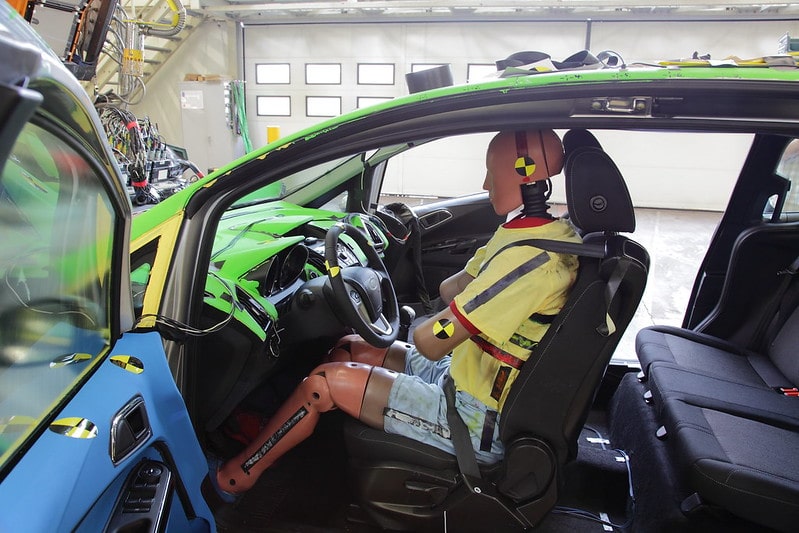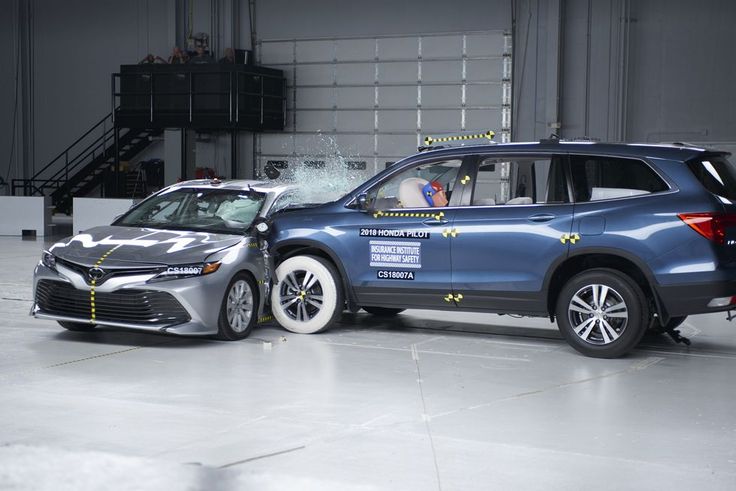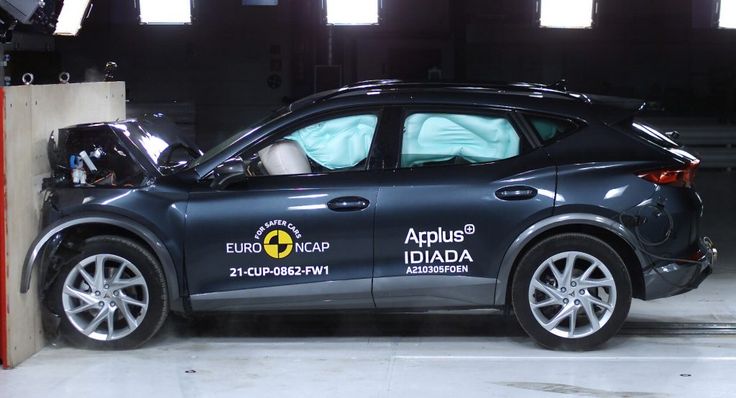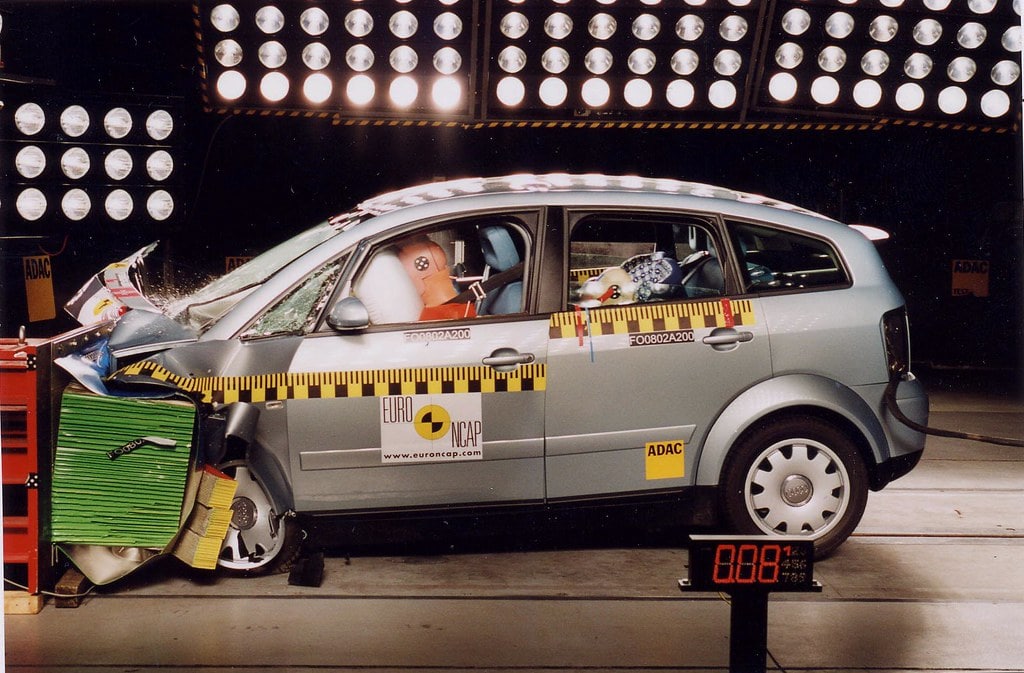Any automotive manufacturer when releasing a new car model must ensure technical standards and safety levels. The process of inspecting cars before selling them will minimize the risk of accidents. And help car manufacturers check the quality of each vehicle before it is put on the market. Therefore, all automakers must strictly comply with regulations and general inspection steps to ensure the performance of their vehicles. And this process is called the “car crash test” to check the safety of the new car, whether it is eligible to run on the road conditions or not?
There are 3 agencies that conduct crash tests to determine the safety of cars. That’s the National Highway Transportation Safety Administration (NHTSA), which operates under the US Department of Transportation. The second is the Insurance Institute Of Highway Safety (IIHS) which is backed by the world’s major auto insurance companies. The last is Euro NCAP (European New Car Assessment Programme). All agencies use different assessment standards, in which the crash test procedure is also slightly different.
Contents
NHTSA Crash Tests

NHTSA car safety tests include: Frontal crash test, side pole crash test, side barrier crash test, and rollover test.
Frontal crash test
NHTSA let the car move at a fixed speed of 56 km/h with 2 dummies sitting in the driver’s and passenger’s seats, with seat belts. The dummy’s goal is to simulate a human in an accident while collecting data that cannot be collected. Dummies come in a variety of sizes to suit a wide range of ages and heights, from babies to adults.
These dummies work similarly to humans to get more realistic results. For example, the spines of these dummies are made of alternating layers of metal discs and rubber cushions. Then, the car crashes into a sturdy fence, and the damage ratio of the two dummies will determine the first test result.
Most accidents injure a person’s rib cage. Therefore, the testers placed a motion sensor on the dummy’s chest to see how much of an effect the chest would have. Likewise, load cells indicate the force that a particular bone can withstand before breaking. And, it’s helpful to know how bones will be affected in a car crash.
The dummy also contains an accelerometer to measure the accelerating forces acting on an object such as ahead. It helps to track the movement of an object and determine its position in space. Your body impacts the surrounding objects during an impact. Because in the car there are many hard objects that hit your body during a collision.
Side pole crash test
This is a very harsh test of a car’s ability to protect the head. Without effective protection, the pole will hit the head leading to serious injury. Head protection airbags have become an important solution but great care is required to ensure the effective operation of those devices.
In Euro NCAP testing, a car was pushed sideways at 32 km/h against a stiff and narrow pole. The vehicle is positioned perpendicular to the direction of motion, or as it did in 2015 and earlier, deviated by a small angle away from the perpendicular.
Two dummies were placed in the vehicle, a male in the driver’s seat and a small female dummy in the rear seat directly behind the driver.
Side barrier crash test
A car is towed at 20 km/h and at a 75-degree angle into a 9.5-inch diameter pole, hitting the vehicle on the side in the driver’s position. This test was done to simulate what would happen if the driver slid off the road and hit an object such as a power pole. A small-sized female dummy is placed in the driver’s seat.
Rollover test.
The car is simulated with 5 passengers inside and a full fuel tank, moving on complex and constantly changing terrain conditions. Specialized measuring tools will measure the parameters of the tire and if 2 tires on the same side rise at least 5.1 cm above the road surface, the vehicle is assessed as at risk of rollover.
Results from these tests are aggregated into a rating of 1 to 5 stars, while 5 stars are the highest rating. You can search for vehicles with a 5-star rating on the NHTSA website and its respective website, Safecar.gov.
>> Read more: Pro Tips on How to Test Drive a Car
IIHS Tests

This is one of the most prestigious car safety rating agencies today with a “Top Safety Pick+” rating list that includes excellent cars that pass all the tests with an impressive score.
According to the IIHS, a car’s performance in most tests (including headlight, crashworthiness, and LATCH usability) is rated poor, marginal, acceptable, or good. In IIHS top safety pick 2022, not only did it pass the crash test, but the vehicle must also have a frontal collision warning system and attain good ratings in all IIHS tests, preventing a collision between two cars and a pedestrian. In addition, to win a Top Safety Pick+, a vehicle must pass IIHS headlight ratings as good or acceptable.
IIHS safety standards are determined through 5 tests:
Frontal crash tests
Frontal crashes are the most common type resulting in fatalities. This test is quite similar to the NHTSA test. However, after crashing the vehicle directly into an obstacle, the IIHS focused not only on occupant injuries but also on the structure and effectiveness of the vehicle’s safety devices.
Moderate overlap frontal test (frontal offset test)
In this test, a car drives at 40 mph toward a deformable barrier. The height of a barrier is over 2 feet. A dummy representing a medium-sized man is placed in the driver’s seat. Forty percent of the total width of the vehicle hit the fence on the driver’s side. The test results are the impact force and damage to the head, neck, and spine of the victim.
Driver-side and passenger-side small overlap frontal tests
In the test, a vehicle drove at 40 mph toward a 5-foot-high stiff barrier. A dummy representing a medium-sized man is placed in the driver’s seat. Twenty-five percent of the vehicle’s total width hits the driver’s side fence.
To rank a good point in the crash tests, the vehicle’s surrounding areas and safety cage must hold up in the frontal crashes. The model must also limit the risk of injury and occupant movement during those types of collisions. Crash tests are performed with varying degrees of intensity depending on the vehicle’s weight and type.
The passenger-side test is like the driver-side test, except that the car hits the fence on the right. Also, instead of just one Hybrid III dummy, there are two – one in the driver’s seat and one in the passenger’s seat.
Head restraints and seat test
This test uses dummies and snowmobiles to measure how well the vehicle’s seats and head restraints are at preventing rear-end collisions and other neck injuries. The dual criteria for this test are geometry (whether the headrest is in the proper position) and dynamism (how supportive the seat is during a crash). If a vehicle offers multiple seating options, testing is usually performed on the most widely available vehicle.
Roof test
Finally, the roof strength test will use a hydraulic press, which affects the ceiling with a force equivalent to a collision or a rollover. To receive the highest rating, the roof needs to withstand a load equal to at least four times the vehicle’s weight when idling.
In 2021, IIHS has just released a new side crash test with a much stronger crash force and speed than before. It causes many cars that failed the crash test. According to IIHS, in initial tests, only 1 in 20 small SUVs achieved a “good” rating in the new test. That is the Mazda CX-5.
Although quite surprising, the Mazda CX-5 really perform “good” in the post-side collision. The frame on the side of the car remains sturdy after the collision and the head and neck of the driver and passenger sitting on the side of the collision are still well protected. The models that scored “acceptable” in the new test were the Audi Q3, Buick Encore, Chevrolet Trax, Honda CR-V, Nissan Rogue, Subaru Forester, Toyota RAV4, Toyota Venza, and Volvo XC40.
The cars that scored “marginal” in the new test were the Chevrolet Equinox, Ford Escape, GMC Terrain, Hyundai Tucson, Jeep Compass, Jeep Renegade, Kia Sportage, and Lincoln Corsair. Meanwhile, only two models have the worst crash test ratings in the new test: Honda HR-V and Mitsubishi Eclipse Cross.
Euro NCAP Tests

Euro NCAP is a non-profit organization whose funding is maintained by the EU member state governments and their founders. According to the latest statistics, many cars on the market are evaluated by this organization. Euro NCAP has examined more than 1,800 crashes at a total cost of 160 million euros, saving 78,000 lives.
Vehicles tested at Euro NCAP will undergo tests including the same frontal crash test as NHTSA and IIHS, which mainly assesses the injury severity of the two dummies in the front seats.
The second test is a side impact. Euro NCAP uses an obstacle that has the size: L x W: 500mm x1,500m moving at a speed of 50 km/h crashing into the side of the vehicle. The results will evaluate the force exerted on the dummy placed on the driver and passenger seats.
Next is the pedestrian impact test – this is a quite new test included in Euro NCAP’s assessment, focusing not only on the safety of the occupants but also on other road users. The vehicle will drive at 40 km/h and collide with a dummy. The results will be injuries to the head, and upper legs… that the car has caused.
Finally, the Euro NCAP test of technology and safety systems on the car. The standard is the effectiveness of safety equipment such as seat locks and safety latches in case of a rear-end collision. In addition, it also evaluates the seat belt warning, automatic emergency brake, and safety system … works when the vehicle collides.
>> Related posts: How Car Crash Testing Works: All You Need To Know
Steps to conduct safety tests on vehicles
Step 1: The test vehicle needs to discharge all kinds of solutions such as oil, and coolant… out of the vehicle. This is to avoid during the test, these solutions will flow to the outside of the device in the event of an impact.
Step 2: Install gauges and sensors around the vehicle. These gauges and sensors ensure a tight fixation on the vehicle body.
Step 3: Install cameras and lights inside and outside the vehicle at different angles to capture images during the collision.
Step 4: Evaluate the test points on the vehicle with decals and rulers to determine the position and points of the vehicle.
Step 5: Take the vehicle to carry out the weighing experiment after removing the solutions and installing the machines into the vehicle.
Step 6: Place the dummy in the car. This dummy is fitted with sensors to assess the extent of damage to the body. When an accident occurs and reflects the impact of actual collisions on people.
Wrapping Up
Nowadays, finding the safest car is not as difficult as you think. All you need to do is check the ratings of the cars you desire on NHTSA. If you see good ratings there, give that car a plus. In addition, you should also check to see if the vehicle is on the IIHS’s top safety list.
If you find the car in the top safety pick, you can buy it. However, good NHTSA ratings and IIHS top safety picks don’t mean that your vehicle is 100% safe. As we mentioned that both dealers do not cover all aspects when testing vehicles. Hopefully, the information about the car crash test will be useful for you.



